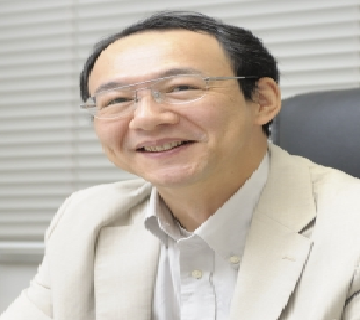Scientific Program

Tatsuya Suzuki
Professor, Nagaoka University of Technology, Japan
Title: Actinide analysis by ICP-MS/MS and actinide separation
Biography:
Tatsuya Suzuki has received his PhD in nuclear engineering from Tokyo Institute of Technology (Japan) in 1995. He was invited as a full professor at the Department of Nuclear System Safety Engineering of Nagaoka University of Technology in 2012. Currently, he is a professor and deputy head of the Department of Nuclear System Safety Engineering, and chief of Radio Isotope Center at Nagaoka University of Technology, Japan. His research fields also cover the plasma chemistry and the electromagnetic separation. He has published more than 100 papers in reputed journals.
Abstract
The actinide analysis, determination of actinide nuclides and their abundance, is important in the nuclear field from the viewpoints of the evaluation of nuclear characteristics, the radioactive waste management and decommissioning, the nuclear forensics and safeguard, and so on. We have been studying the actinide analysis by a triple quadrupole ICP-MS/MS and the actinide separation methods which are required for the pretreatment. In the present report, we introduce our studies and the obtained results.
The quantitative actinide analysis by a triple quadrupole ICP-MS/MS, Agilent 8900, has been studied1. The used nuclides were 238U, 237Np, 240Pu, 241Am, and 244Cm, respectively. We confirmed the formation percentages of ionic species of each actinides in several kinds of collision reaction cell modes, no gas, hydrogen gas, helium gas, oxygen gas, and BEC (background equivalent to counts) of each actinide ions are confirmed in each modes. And also, we investigated the formation rates of molecular ions in oxygen gas mode in detail. We found that the formation rates of actinide ion, oxide ion, and dioxide ion depends on the oxygen flow rate and on actinides; the percentage of actinide monoxide ion with higher atomic number is higher, while percentage of the dioxide ion with lower atomic number is higher. From these results, we suggest the feasibility of isobaric discrimination by comparison of yield in some different oxygen gas flow rate.
While the combination of actinide mass analysis and actinide separation is helpful for making more precise and more accurate actinide analyses. The actinide separation has been proposed by the column techniques based on the ion exchange. The tertiary pyridine resin was used for separation. Light actinides, U, Np, Pu, can be easily separated from heavier actinides, trivalent actinides such as Am, Cm in hydrochloric acid solution2. The mutual separation of trivalent separation is also easily achieved in methanol/ nitric acid mixed solution.
- Material Chemistry and Development
- Material Characterization
- Energy Materials
- Biomaterials
- Nanomaterials
- Ceramic and Composite Materials
- Materials in Industry and Information Technology
- Defence and Aerospace Materials
- Computational Material Chemistry and Science
- Imaging of Materials
- Future scope of Material Chemistry

